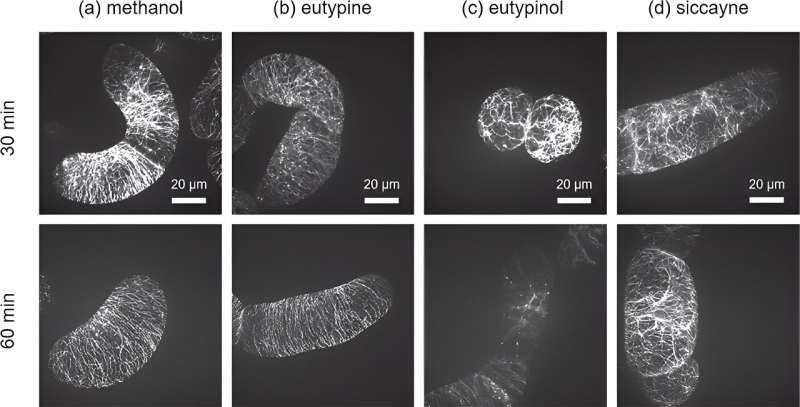This article has been reviewed according to Science X's editorial process and policies. Editors have highlighted the following attributes while ensuring the content's credibility:
fact-checked
peer-reviewed publication
trusted source
proofread
Unlocking the secrets of grapevine immunity: Study reveals how Eutypa lata metabolites activate plant defense mechanisms

Over the past decade, grapevine trunk diseases (GTDs) have emerged as a significant threat to viticulture, causing economic losses, increased management costs and lower wine quality. Traditional defense methods, like using arsenite, have now been banned due to their high toxicity. However, the occurrence of GTDs is increasing in vineyards worldwide as consequence of climate change, there is an urgent need for new strategies to suppress the outbreak of symptoms.
Current research is focused on Eutypa Dieback caused by Eutypa lata, which secretes phytotoxic compounds that suppress host defenses. It is important to understand the interactions between these metabolites and the defense mechanisms of grapevines for the effective control of GTDs.
In June 2022, Horticulture Research published a perspective titled "The fungal elicitor eutypine from Eutypa lata activates basal immunity through its phenolic side chains."
In this study, researchers aimed to understand the impact of secondary metabolites from E. lata, specifically acetylenic phenols like eutypine, eutypinol, siccayne, and eulatinol, on plant defense.
They utilized a grapevine line with microtubules were tagged by GFP , which could examine cellular responses to these compounds and their chemical analogs.
The results revealed that eutypine can activate defense mechanisms in plants, primarily due to its phenolic moiety, not the acetylic side chain. The study also found that the aldehyde group on the phenolic ring plays a crucial role in triggering defense responses, with a reduction to an alcoholic group significantly diminishing this activity.
To be specific, the research first monitored calcium influx in V. rupestris cells by using extracellular alkalinisation as a proxy. Eutypine elicited a clear, quick pH response, indicating its specific role in defense activation. The study also investigated the defense-related genes expression.
Eutypine significantly increased the expression of defense-related genes such as PAL and RS, whereas eutypinol and others had little to no effect on gene activation. This distinct response pattern among structurally similar metabolites highlights the importance of specific substituent groups in activating plant immune responses.
Additionally, researchers observed the effects of these compounds on cell mortality and cellular structures, showing that eutypine, eutypinol and siccayne cause only minor cell mortality and eutypinol specifically eliminated cortical microtubules, a crucial part of early defense responses, while eutypine did not.
This outcome suggested different modes of action between these compounds. Lastly, the study examined the activation of defense responsing by analogs of eutypine , eutypinol and different combination of the two compounds. These analogs were found to activate calcium influx, and induced mild up-regulation of defense genes.
The research thus revealed that different chemical groups in these compounds play varying roles in plant defense mechanisms, with some enhancing and others restraining bioactivity. The efficacy of these compounds was also tested on grapevine and tomato leaves, confirming their ability to elicit defense responses in different plant species.
In conclusion, these findings reveal a complex interplay between fungal compounds and plant immunity, highlighting the need to understand the chemical communication between host and pathogen.
This study offers valuable insights for future strategies to manage GTDs, particularly in the context of environmental stresses like climate change.
More information: Pingyin Guan et al, The fungal elicitor eutypine from Eutypa lata activates basal immunity through its phenolic side chains, Horticulture Research (2022). DOI: 10.1093/hr/uhac120
Journal information: Horticulture Research
Provided by NanJing Agricultural University





















